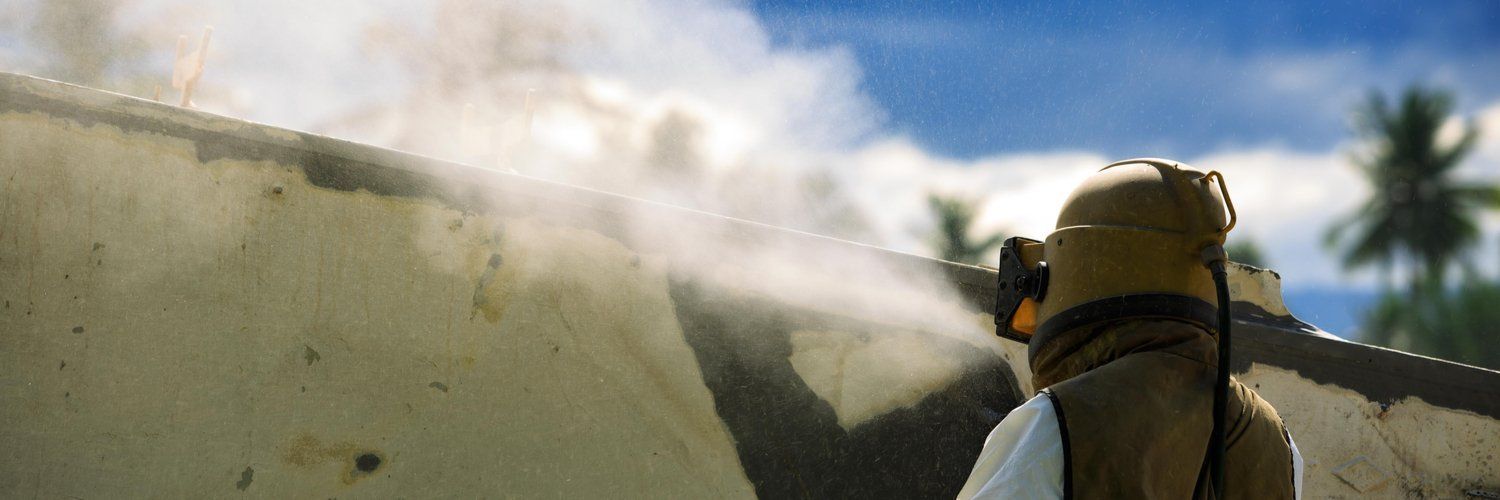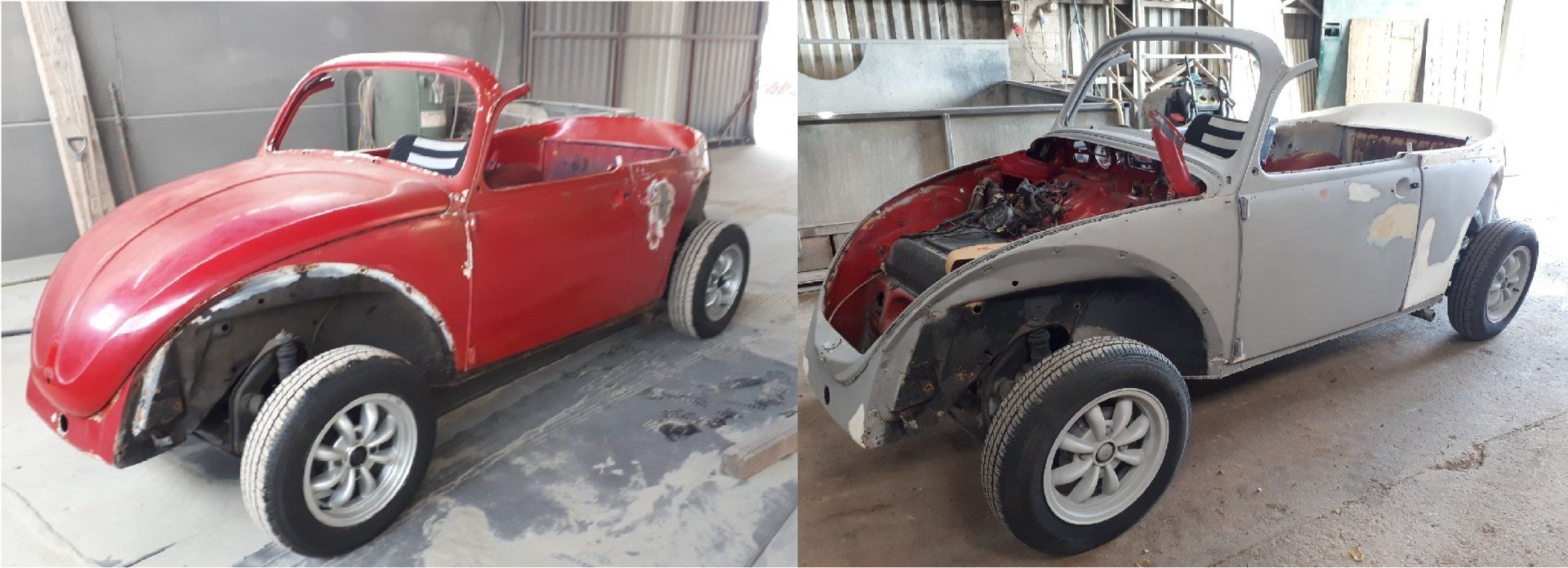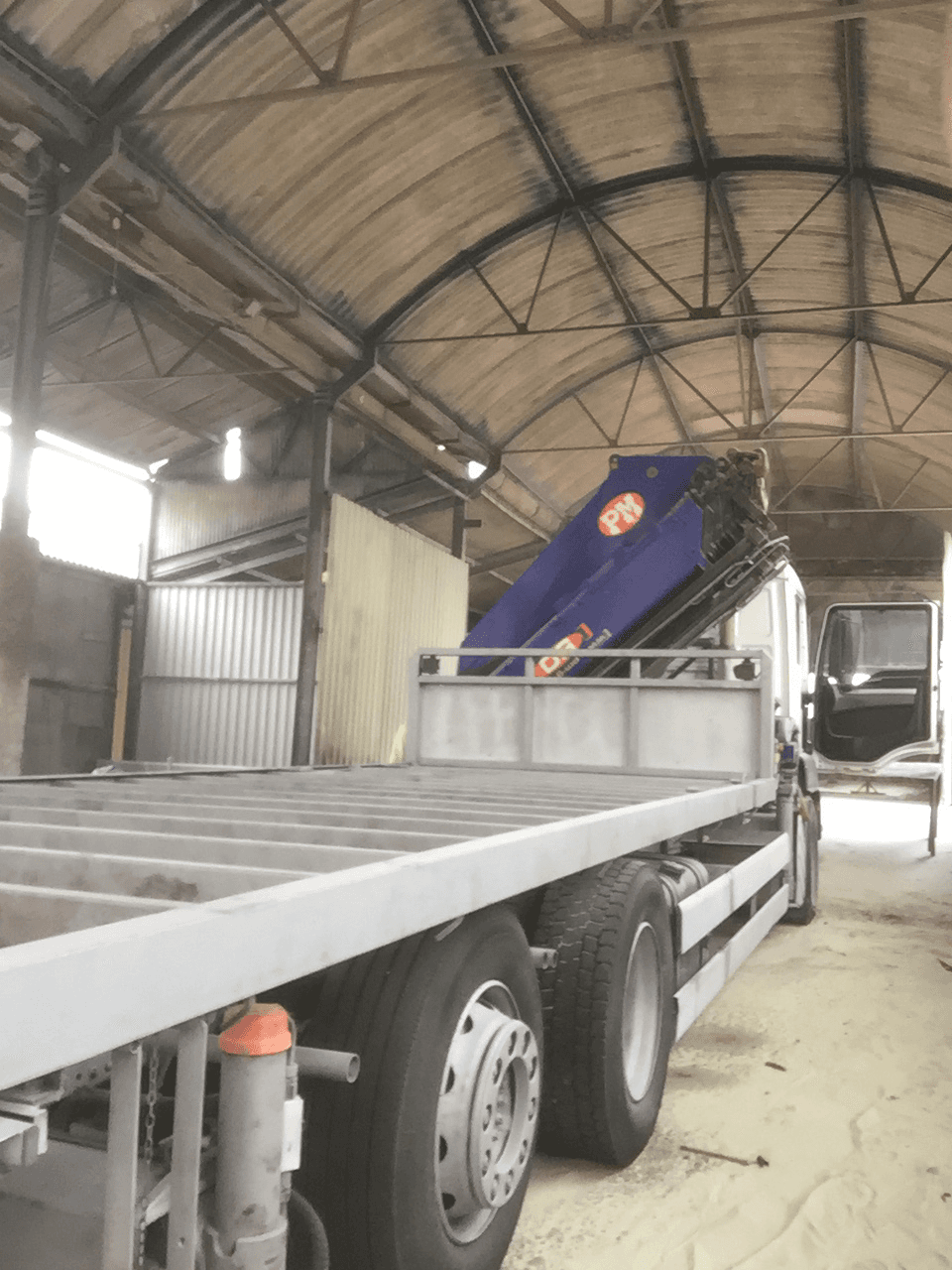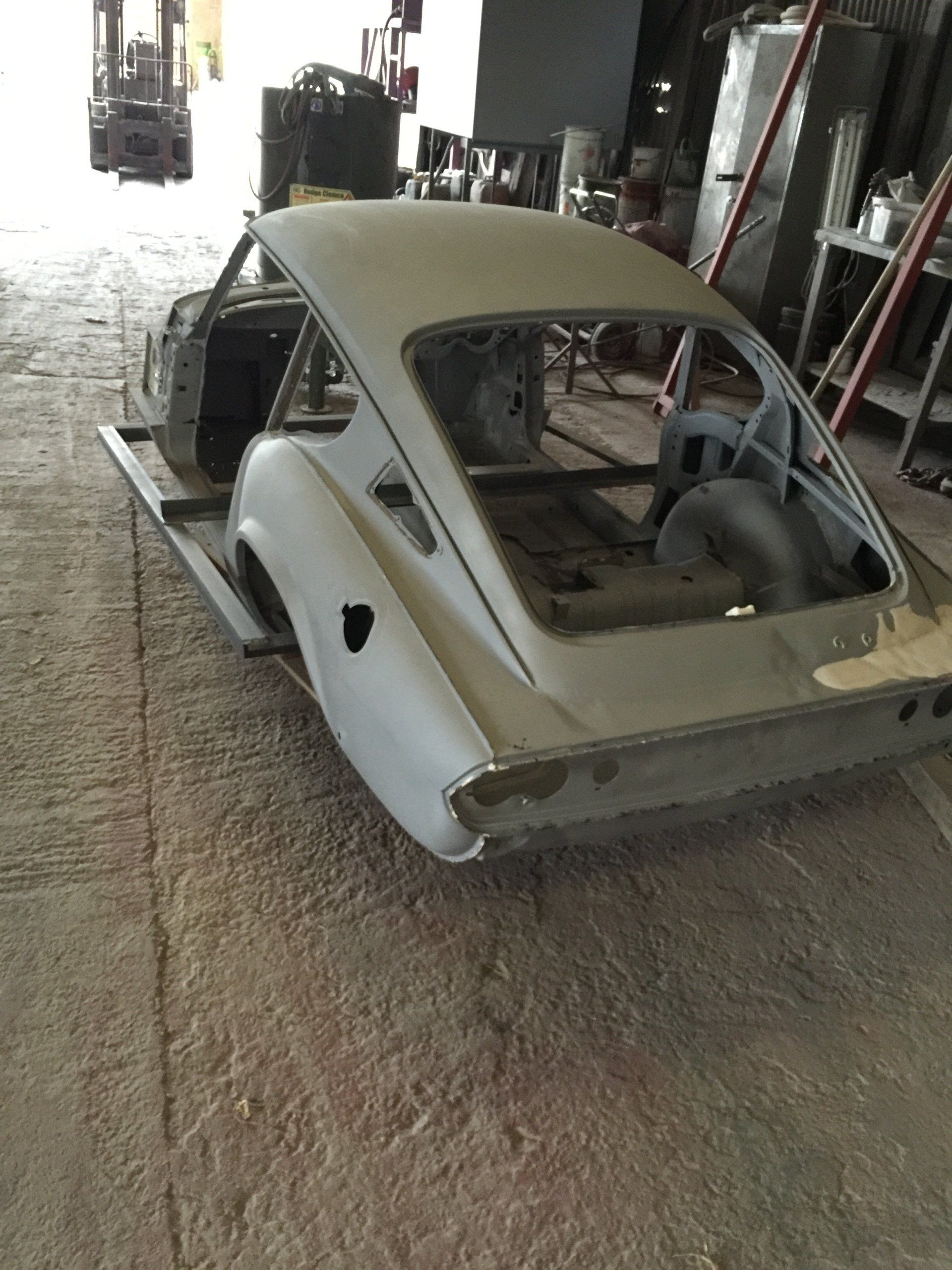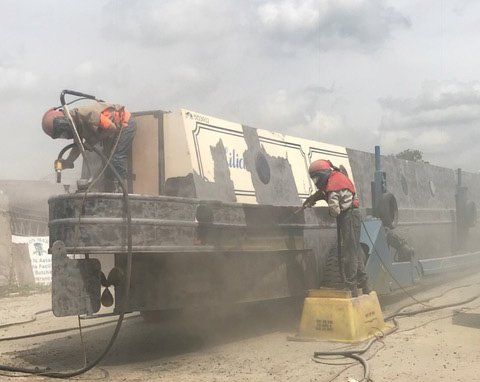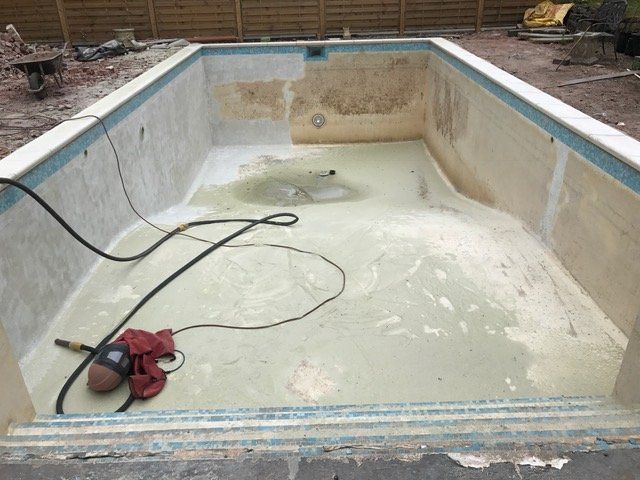Examples Of Our Work
This example shows how the truck has been taken back to its original pre-painted state.
The truck was originally yellow as can be seen and had many layers of paint.
Sand/Shot blasting this back to its base metal with a primer coat gave our client the perfect surface to then paint to their chosen colour.
For this project, we see a container framework made to house a large portable generator. It was shot blasted back to the surface standard required - ready for primer and painting.
Sand/Shot Blasting Explained
Historically, the material used for artificial sandblasting was sand that had been sieved to a uniform size. In the early 1900s, it was initially assumed that sharp-edged grains provided the best performance, though this was later demonstrated not to be correct.
Other materials for sandblasting have been developed instead of sand; including carborundum grit, steel shots, copper slag, powdered slag, glass beads, metal pellets, dry ice, garnet, powdered abrasives of various grades, and even ground coconut shells, corncobs, walnut shells, and baking soda (soda blasting).
These have been used for specific applications and can produce distinct surface finishes.
Some commercial grade blasters are specially designed to handle multiple blast abrasives, which are commonly referred to as multi-media blasters.
Sandblasting can also be used to produce three dimensional signage, which is considered a higher end product compared to flat signs. These signs often incorporate gold leaf overlay and sometimes crushed glass backgrounds which are called smalts.
Sandblasting can be used to refurbish buildings or create works of art (carved or frosted glass). Modern masks and resists facilitate this process, producing accurate results.
Sandblasting is used for cleaning boat hulls, bricks, and concrete work. It is also known as blast cleaning and is used for cleaning industrial as well as commercial structures. However, sandblasting is rarely used for non-metallic work pieces.

